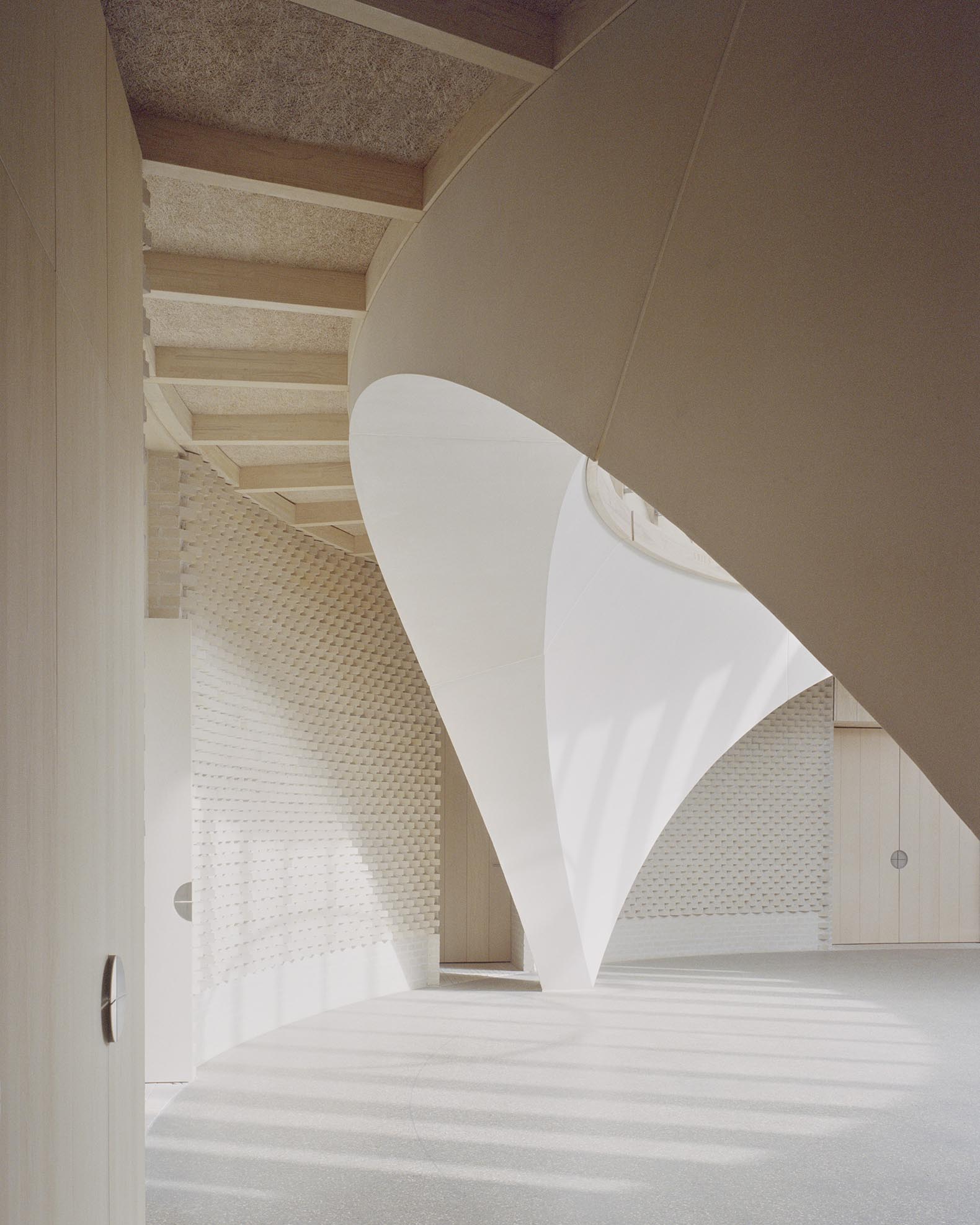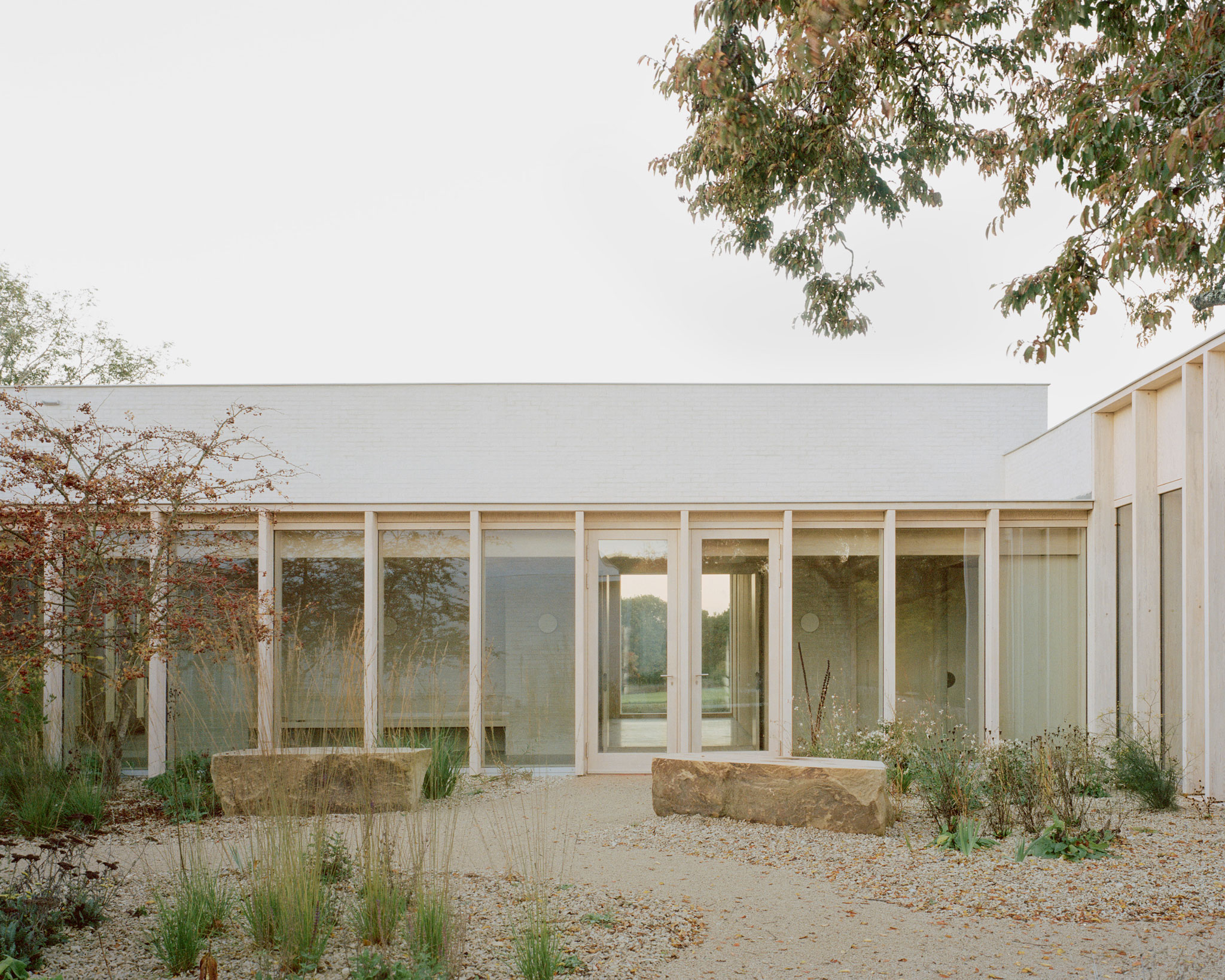The building demonstrates an exemplary approach to passive design and long-term sustainability. James Gorst Architects adopted a ‘fabric-first’ approach to the build, with the main structural frame entirely constructed off-site from glue-laminated timber, engineered to eliminate the need for any steelwork.
Underfloor heating is provided by a ground source heat pump that is buried in the landscape, with additional power provided by photovoltaic panels.
The inner temple’s pre-cast pendentive arches provide thermal mass. A raised floor slab naturally cools the internal spaces with fresh air supplied by an underground labyrinth ventilation system, while high-level actuators in the temple clerestory allow warm air to escape.

Temple Complex in Rural Hampshire by James Gorst Architects. Photograph by Rory Gardiner.
Collaborating with landscape architects McWilliam Studio, Wilkinson and the team undertook a wider reorganisation of the site, providing a series of gardens connected along pedestrian pathways, to allow for moments of contemplation and connection to the surrounding valleys. At the entrance to the building, two reflection pools animate the east façade and offer a moment of pause and meditation, while the central courtyard is sized to mirror the internal footprint of the temple.

Temple Complex in Rural Hampshire by James Gorst Architects. Photograph by Rory Gardiner.
Project description by James Gorst Architects
Situated on the spur of the hillside projecting westwards with expansive across the South Downs National Park, the new temple is grounded on an ancient ley line connecting Chapel Common to the old nunnery of Lyss Place.
Commissioned by The White Eagle Lodge, a spiritual organisation founded in 1936. The complex has been conceived as a composition of orthogonal pavilions unified by a cloistered walkway, facing an open central courtyard. The arrangement of these pavilions is shifted locally, to create carefully landscaped gardens and to address the processional requirements of the group.
Within the building, the temple follows an outworking of sacred geometries and harmonious mathematical ratios imbued in the philosophy of the White Eagle Lodge, investigating the relationship between the space occupied by a complete congregation and architecture as sacred expression. More images to follow later this year.

































